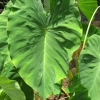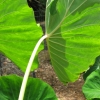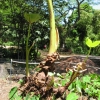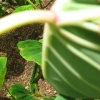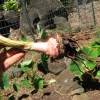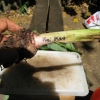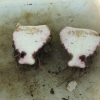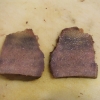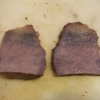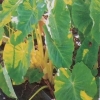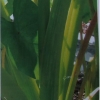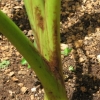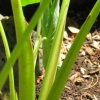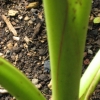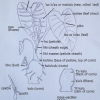Use As Food
The poi is of excellent quality and was highly esteemed by the Hawaiian chiefs. The time of cooking may be twice as long as for other varietics. A fragrant odor (‘ala) is usually emitted when the ‘i‘o kalo (Corm) are cooked: hence the name ‘Ala is sometimes used, instead of Kāī, for this group.
Distribution
Most widely planted variety of the Kāī, grown throughout the islands but particularly on Kaua‘i and at Waialua, Oahu. Except in a few scattered locations in Hawai‘i, this taro is grown under lo‘i (wetland) culture. Observations seem to indicate that the Kāī varieties are more tolerant of alkaline conditions than any other group, and of stagnant water. They are also tolerant of deep or soft patches whereas most varieties require a firm, relatively shallow soil. There is evidence that Kāī are more resistant to soft rot.
General Characteristics
Medium in height, well spreading, maturing within 8 to 12 months, producing from 5 to 10 ‘ohā; except for the pinkish flush near the Hā (Petiole) kōhina (base), it is very similar to Kāī ‘Ala.
Ha (Petiole)
70 to 90 cm. long, light yellowish-green with pink flush particularly conspicuous near kohina (base), distinctly reddish at edge, light reddish-purple at apex, a reddish-purple ring at kōhina (base) with lilac-pink for 3 to 5 cm. above the base.
Lau or Lu'au(Leaf Blade)
45 to 55 cm. long, 30 to 40 cm. wide, 35 to 45 cm. from tip to base of sinus (māwae), egg-shaped (ovate), concave (curve inward), pendant, dark green; margins with numerous fine undulations; veins light green on upper surface, usually light reddish- purple on lower; piko small, reddish-purple; round leaf section (lobes) obtuse (wide) to slightly acute (narrow), wave-like (undulate), with fairly deep, narrow lihi māwae (sinus).
'I'o kalo (Corm)
Flesh white with pink tinge particularly conspicuous at the top (apex); skin light pink.
Pua (Flower)
Hā (peduncle) light yellowish-green; flower cover (spathe) 18 to 23 cm. long, the lower tubular portion 3 to 4 cm. long, yellowish.green usually with pink tinge and reddish area at kōhina (base), loosely rolled and occasionally somewhat open, the upper portion yellow, loosely rolled and open near constriction (skinny part of flower); spadix (spike of flower) 6 to 9 cm. long, the sterile appendage (tip of flower's spike) 7 to 11 mm. long.
Remarks

